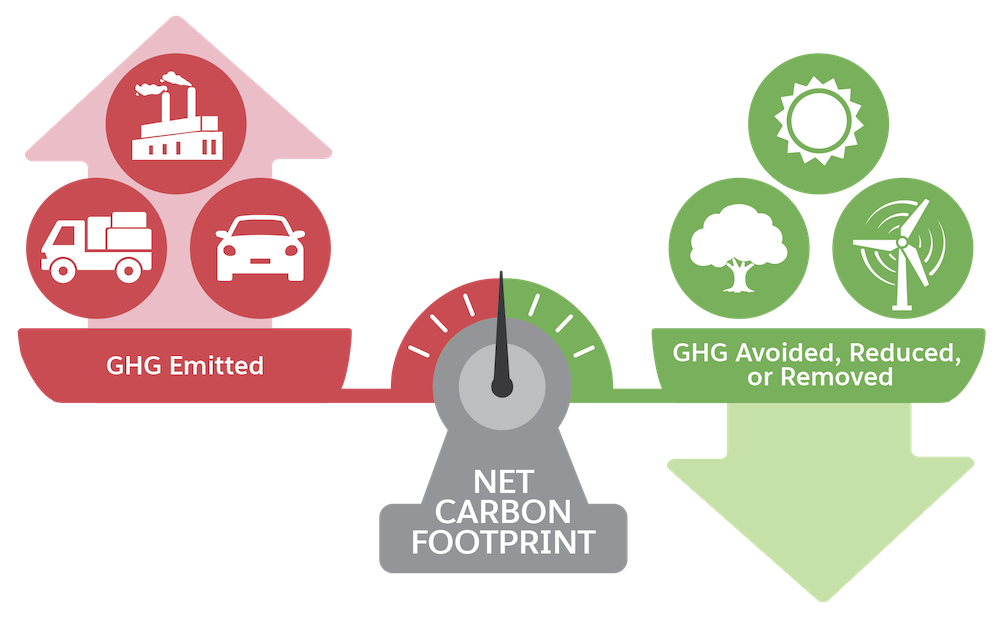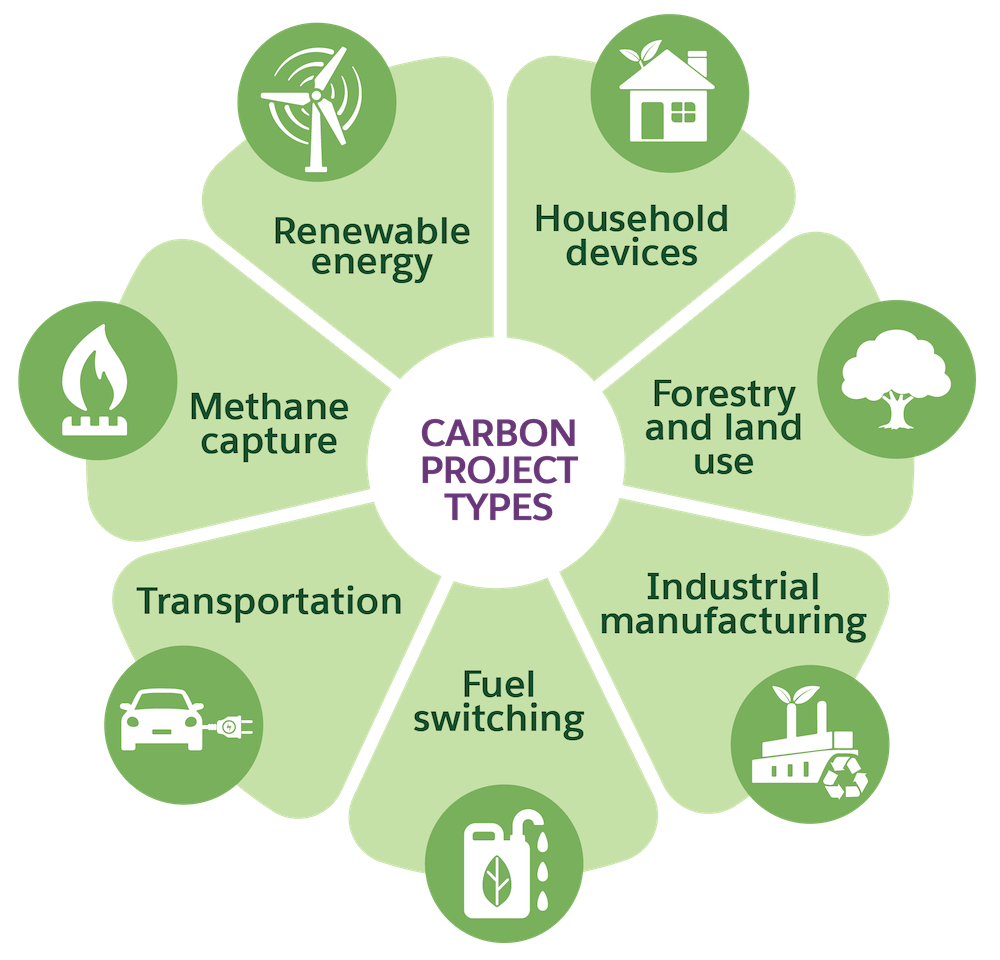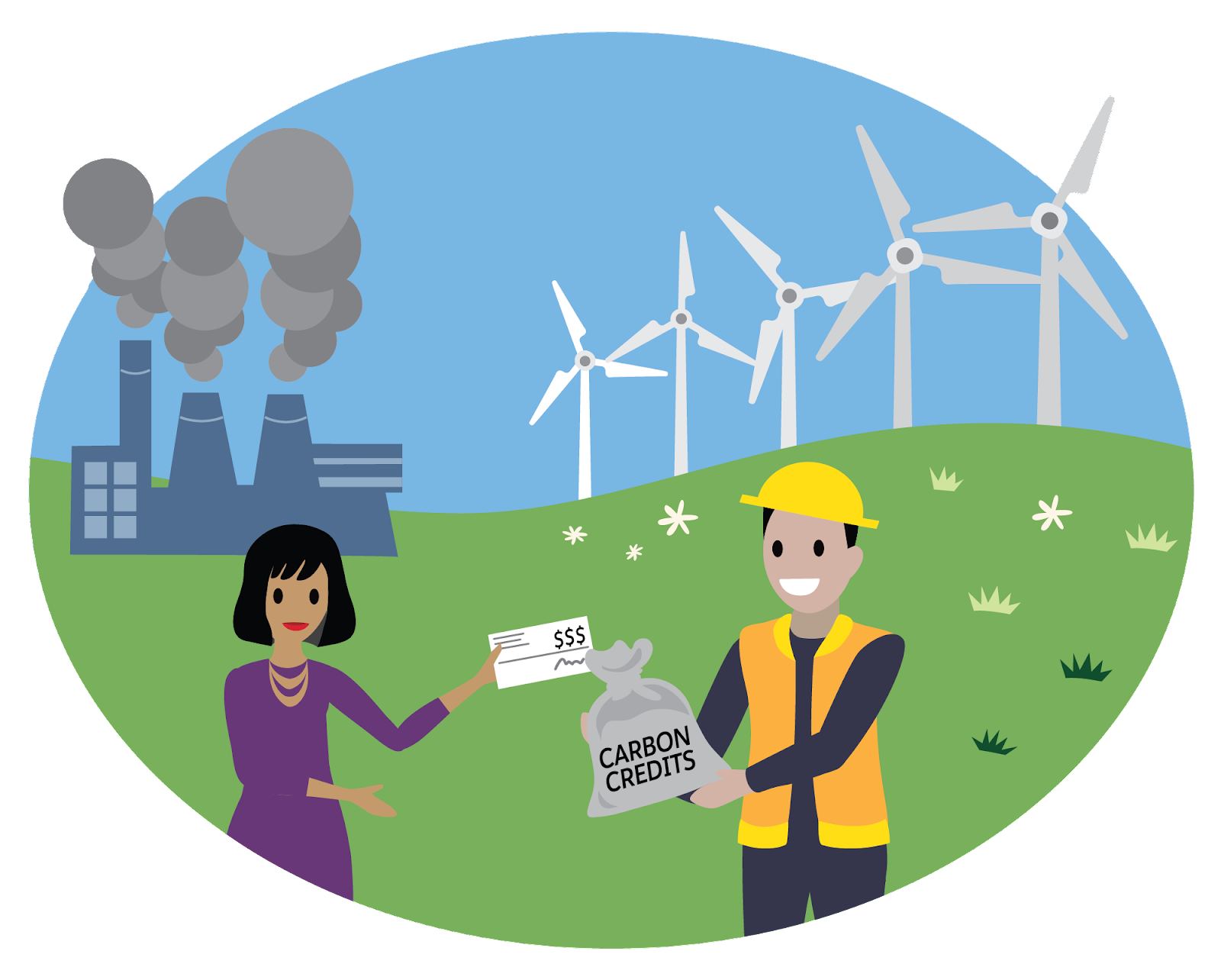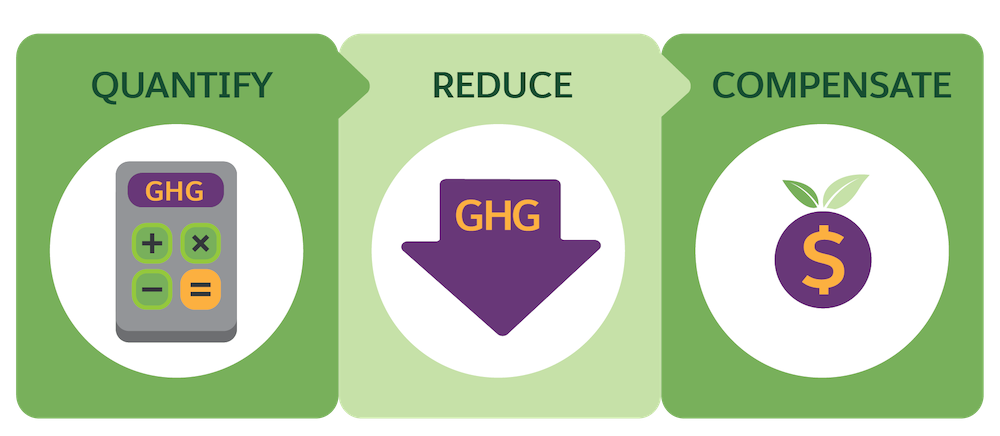Get Started with Carbon Credits
Unit 1: Get Started with Carbon Credits
Learning Objectives
After completing this unit, you’ll be able to:
- Explain carbon projects.
- List the types of carbon projects.
- Explain how carbon credits work.
- Explain how Net Zero Cloud helps in your net zero journey.
NTO’s Net Zero Journey So Far
Sam Rajan is the chief sustainability officer of Northern Trail Outfitters (NTO), a leading retail brand known for its outdoor and recreational gear and apparel.
With the help of Safiya, NTO’s Salesforce admin, Sam set up the Net Zero Cloud app to measure, track, analyze, and report on greenhouse gas (GHG) emissions throughout NTO’s supply chain. He’s calculated the company’s current carbon footprint and estimated future emissions using the computation capabilities of Net Zero Cloud.
Under Sam’s leadership, NTO is implementing several strategic measures to reduce its emissions. It’s switching to cleaner sources of energy, installing on-site solar-power generation, promoting greener commutes, and doing more business with sustainable suppliers.
Although NTO has significantly lowered its emissions, achieving its deep emissions reduction targets will take time, and even then it’s unlikely the company will ever be able to reduce emissions all the way down to absolute zero. Sam knows that NTO’s climate strategy means he should do everything he can, today, to take climate action. So what can Sam do besides reducing emissions as quickly as possible? He can purchase carbon credits to compensate for unavoidable emissions.
Carbon credits are transferable instruments that represent avoidance, reduction, or removal of CO₂ or other GHG emissions. In this module, you learn more about carbon credits and follow along as Sam and Safiya set them up in Net Zero Cloud.
Compensate for Unavoidable Emissions
Organizations can compensate for unavoidable emissions by planting more trees that act as natural reservoirs of carbon, or they can avoid, reduce, or remove an equivalent amount of emissions that occur elsewhere. Earth’s atmosphere has no boundaries, and because all GHGs mix into the same atmosphere, avoiding, reducing or removing them anywhere contributes toward our shared global goal of achieving global net zero. Cool, isn’t it?

All About Carbon Projects
Activities that produce carbon credits, which can be purchased to compensate for unavoidable emissions, are broadly known as carbon projects. For example, reforesting degraded farm land or building a renewable energy wind power plant.
On a broader level, carbon projects can be categorized as:
-
Avoidance: These projects avoid or reduce practices that cause emissions, such as by reducing deforestation.
-
Reduction: These projects reduce emissions from current sources, such as by setting up a methane gas capture project at a landfill.
-
Removal: These projects remove emissions from the atmosphere through nature-based sequestration, such as by reforestation.
-
Sequestration: These projects capture and store atmospheric CO₂ through technology-based removal, such as by setting up a Direct Air Carbon Capture and Storage (DACCS) plant.
There are different types of carbon projects. Let’s go over them.

Forestry and land use: These are projects that focus on reforestation, afforestation, and conservation of existing forests. Apart from reducing emissions, such projects maintain ecosystems, preserve biodiversity, and increase livelihoods for the local population.
Fuel switching: These are projects that support replacing inefficient and nonrenewable fossil fuels, such as coal or kerosene, with relatively cleaner and more energy-efficient fuels, such as natural gas. Fuel switching lessens carbon emissions and is a cost-effective alternative for end users.
Household devices: These are projects that provide sustainable fuel, such as efficient cook stoves or biogas digesters, to local communities. Such projects reduce wood consumption, prevent deforestation, improve the air quality, and have health benefits for families.
Industrial manufacturing: These are projects that increase industrial energy efficiency. How? By reducing the energy requirements of manufacturing equipment and processes, switching to green energy suppliers, and generating on-site sustainable energy, to name a few ways. The projects also reduce the lifecycle emissions and environmental impact of products.
Renewable energy: These are projects that build or maintain renewable energy sources, such as solar, wind, or hydroelectricity sites across the world. Such projects boost the amount of renewable energy on the grid, create jobs, and decrease reliance on fossil fuels.
Methane capture: These are projects that involve capturing and converting methane (a powerful greenhouse gas) before it is released to the atmosphere. They achieve this by flaring methane to convert it to CO2 or by capturing landfill gasses released by waste disposal and converting them to usable energy like electricity.
Transportation: These are projects that improve public transportation. How? By shifting to fuel-efficient vehicles and energy-efficient fuels, and ensuring the process management of vehicle scrapping or retirement. Such projects not only improve the air quality and health of residents, but also increase urban livability.
How Carbon Credits Work
An individual or a company can invest in carbon projects, located anywhere in the world, by purchasing carbon credits.
As we learned earlier, carbon credits are transferable instruments that represent avoidance, reduction, or removal of CO₂ or other GHG emissions. The credits are certified by governments or independent certification bodies. One carbon credit represents reduction, avoidance, or removal of one metric tonne of CO₂ or an equivalent amount of CO₂ and other GHG. They are measured in metric tonnes of carbon dioxide equivalent (tCO2e).

Carbon credits are critical tools that, made and used well, can play an important role in our collective journey to net zero while simultaneously helping us build a nature-positive world.
Once a carbon credit has been purchased, it can be retired or held. After the credit is retired by the holder of the credit, it can’t be resold or claimed again. Retiring a carbon credit ensures that only the credit holder can claim the benefit of the retired carbon credit.
Your Net Zero Journey with Net Zero Cloud
Now that you're familiar with carbon credits, here are the steps you must take along your net zero journey.
- Quantify your carbon footprint.
- Reduce or avoid your emissions.
- Compensate for residual emissions.

And here’s how Salesforce’s Net Zero Cloud helps you at each step of your net zero journey.
Step in your net zero journey |
Description |
How Net Zero Cloud helps |
|---|---|---|
Quantify your carbon footprint |
Take stock of your emissions and identify the emissions that can be reduced versus the unavoidable emissions. |
Net Zero Cloud aggregates emissions across a company’s assets and procurement activities for a year to provide the total annual emissions inventory. You can use this inventory to calculate the emissions per scope and per emissions activity. For more information, see Create an Emissions Inventory. |
Reduce your GHG emissions |
Implement practices to mitigate emissions at the source. |
Using the emissions data from your inventory and emissions forecasts, you can plan for and implement strategies for emissions reduction. |
Compensate for residual emissions |
Purchase carbon credits to compensate for the unavoidable emissions. Manage and track the carbon credits. |
For residual emissions, you must identify the carbon projects that you want to invest in, and determine the number of carbon credits that you want to purchase. You can head to a carbon marketplace to purchase carbon credits. Then, use Net Zero Cloud to manage carbon credits and allocate them. You can also visualize the impact of ongoing projects and their related cost and availability. |
Now that you are familiar with carbon projects and carbon credits, let’s explore how Net Zero Cloud can help you manage them from start to finish.
Resources
- Trailhead: Net Zero Cloud Basics
- Trailhead: Carbon Accounting for Assets in Net Zero Cloud
- Trailhead: Carbon Accounting for Scope 3 with Net Zero Cloud
- Trailhead: Science-Based Target Setting and Emissions Forecasting with Net Zero Cloud
- Salesforce Help: Create an Emissions Inventory
- External Site: Voluntary Carbon Markets Integrity Initiative (VCMI)
